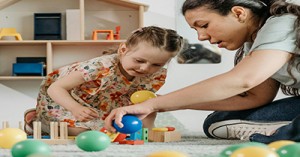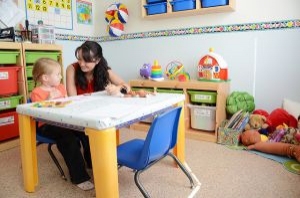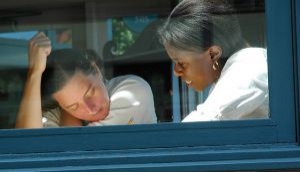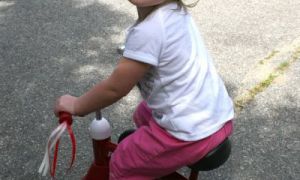Student work placement in early childhood education in Australia is a valuable opportunity for students to gain practical experience and apply the knowledge they've learned in their studies. The following article provides Information About Work Placement, What To Expect During Work Placement, Work Placement Agreement, Work Placement Assessment and more.
Information About Work Placement
-
Hands-On Experience: Work placement allows students to gain hands-on experience in early childhood settings, helping them understand the day-to-day responsibilities of educators.
-
Qualification Requirements: For qualifications like Certificate III in Early Childhood Education and Care, students are required to complete a minimum of 100 hours of work placement. For a Diploma, the requirement is typically 300 hours.
-
Placement Options: Students can complete their work placement through block placements, part-time attendance, volunteer work, or even casual work. Some institutions may also organize placements for their students.
-
Pre-Approval: Work placements usually need to be pre-approved by the study institution to ensure they meet the necessary standards and regulations.
-
Benefits: Work placements provide students with real-life industry experience, improving their employability and ensuring they are job-ready upon graduation.
What To Expect During Work Placement
-
Hands-On Experience: You'll gain practical experience working with children, which will help you understand the day-to-day responsibilities of an early childhood educator.
-
Mentorship: You'll likely be paired with a mentor or supervisor who will guide you, provide feedback, and support your learning journey.
-
Observation and Participation: You'll observe experienced educators and participate in various activities, such as lesson planning, implementing educational programs, and managing classroom behavior.
-
Skill Development: You'll develop essential skills, including communication, teamwork, problem-solving, and time management.
-
Documentation: You'll learn how to document children's learning and development, which is a crucial part of early childhood education.
-
Professional Conduct: You'll be expected to adhere to professional standards and ethics, including maintaining confidentiality and building positive relationships with children, families, and colleagues.
-
Reflection: You'll have opportunities to reflect on your experiences, identify areas for improvement, and set goals for your professional growth.
Work Placement Agreement
A work placement agreement outlines the terms and conditions for students undertaking practical experience in a workplace setting. It typically includes details about the roles and responsibilities of both the student and the host organization. Here are some key components that are often included in a work placement agreement:
-
Host Organization Details: Information about the organization providing the placement, including contact details and the name of the workplace supervisor.
-
Student Details: Information about the student, including their name, contact details, and the course they are enrolled in.
-
Placement Details: The start and end dates of the placement, expected placement days, and total hours per week.
-
Roles and Responsibilities: The obligations of the host organization, such as providing supervision and ensuring tasks are appropriate for the student's skills and experience.
-
Health and Safety: Guidelines to ensure the student's safety during the placement, including any necessary training or protective equipment.
-
Confidentiality: Agreements regarding the confidentiality of information the student may access during their placement.
-
Assessment: Details about how the student's performance will be assessed, including any required documentation or reports.
Work Placement Assessment
Work placement assessments in early childhood education are designed to evaluate your practical skills and knowledge in a real-world setting. Here are some key components of a typical work placement assessment:
-
Observation: An assessor will observe you performing various tasks and interacting with children. This may include activities like planning and implementing educational programs, managing classroom behavior, and ensuring the safety and well-being of children.
-
Documentation: You will be required to document your activities and reflections. This might include maintaining a logbook, writing reports, and completing assessment tasks.
-
Feedback: Your workplace supervisor will provide feedback on your performance. This feedback is crucial for your development and helps identify areas for improvement.
-
Competency Check: The assessor will check if you meet the required competencies for your qualification. This includes both practical skills and theoretical knowledge.
-
Interviews and Discussions: You may have interviews or discussions with your assessor to reflect on your experiences and demonstrate your understanding of key concepts.
Is Work Placement Paid
Work placements in early childhood education in Australia are typically unpaid. However, there are some opportunities for paid placements through subsidies and traineeships. For example, the Australian Government offers a paid practicum subsidy for early childhood education and care (ECEC) providers. This subsidy allows providers to give staff paid leave while undertaking practicums.
Additionally, traineeships in early childhood settings are paid positions, allowing you to earn an income while gaining valuable skills and qualifications.
Cert 3 Work Placement Hours
To achieve the CHC30121 Certificate III in Early Childhood Education and Care, you need to complete a mandatory minimum of 100 hours of work placement. This practical experience is essential for applying the knowledge and skills you've learned in a real-world setting, ensuring you're well-prepared for a career in early childhood education.
Diploma Work Placement Hours
To achieve the CHC50121 Diploma of Early Childhood Education and Care, you need to complete a mandatory minimum of 280 hours of work placement. This practical experience is essential for applying the knowledge and skills you've learned in a real-world setting, ensuring you're well-prepared for a career in early childhood education.
Work Placement Childcare Booklet
For work placement in childcare, there are several resources available that can guide you through the process. Here are a few useful booklets and guides:
-
Childcare Workbook and Work Placement Logbook: This logbook is designed for students pursuing CHC30121 Certificate III in Early Childhood Education and Care and CHC50121 Diploma of Early Childhood Education and Care. It includes assessment tasks, work placement attendance logs, and supervisor testimonials.
-
Work Placement Student Guide: This guide provides comprehensive information on work placement, including eligibility, roles and responsibilities, health and safety guidelines, and assessment procedures.
-
Work Placement Tasks Booklet: This booklet outlines the tasks and activities that students need to complete during their work placement for the Diploma of Early Childhood Education and Care.
These resources can help you navigate your work placement and ensure you meet all the necessary requirements.
What Happens If I Am Having Issues During Work Placement
If you're experiencing issues during your work placement, it's important to address them promptly to ensure a positive and productive experience. Here are some steps you can take:
-
Communicate: Speak with your supervisor or mentor about the issues you're facing. They may be able to provide guidance, support, or solutions to help you overcome the challenges.
-
Document: Keep a record of any incidents or issues that arise during your placement. This documentation can be useful if you need to escalate the matter or seek further assistance.
-
Seek Support: Reach out to your educational institution for support. They may have resources or advisors who can help you navigate the situation.
-
Reflect: Take some time to reflect on the issues and consider if there are any changes you can make to improve the situation. This could involve adjusting your approach, seeking additional training, or finding ways to manage stress.
-
Escalate: If the issues persist and are not resolved through initial communication, consider escalating the matter to higher authorities within your placement organization or your educational institution.
Further Reading
Work Placement In Childcare
Supporting Work Placement Students







 Whether you are doing a Cert 3 or a Diploma traineeship or thinking about doing a traineeship it’s a good idea to understand what wages
Whether you are doing a Cert 3 or a Diploma traineeship or thinking about doing a traineeship it’s a good idea to understand what wages Work placement is an excellent opportunity for you to prepare and gain insight into the early childhood industry as well as help you to clarify
Work placement is an excellent opportunity for you to prepare and gain insight into the early childhood industry as well as help you to clarify Are you thinking of starting a traineeship in childcare? Well from personal experience, working in this child care industry brings great fulfilment and satisfaction. Watching
Are you thinking of starting a traineeship in childcare? Well from personal experience, working in this child care industry brings great fulfilment and satisfaction. Watching There is no truth to the rumour that the certificate III or 'actively working towards' will be phased out.
There is no truth to the rumour that the certificate III or 'actively working towards' will be phased out.
 For educators looking to update their qualification and have the required knowledge, experience and skills instead of completing assignments and tasks to complete a qualification
For educators looking to update their qualification and have the required knowledge, experience and skills instead of completing assignments and tasks to complete a qualification As a student finding information and doing research is an important part of completing assignments. Once you find the information you need to complete the
As a student finding information and doing research is an important part of completing assignments. Once you find the information you need to complete the Being a student and completing assessments can be a hard task. Especially when you don’t understand what the question is, you have to write an
Being a student and completing assessments can be a hard task. Especially when you don’t understand what the question is, you have to write an As you take the next big step and decide to continue studying you need to decide whether you will be able to manage working at
As you take the next big step and decide to continue studying you need to decide whether you will be able to manage working at Hiring overseas educators can not only bring a service the benefits of a diverse, multicultural workplace but also address staffing shortage issues. However before an
Hiring overseas educators can not only bring a service the benefits of a diverse, multicultural workplace but also address staffing shortage issues. However before an Making the decision to study is a big one. It can be stressful, thinking of how you're going to complete assignments or if you're going
Making the decision to study is a big one. It can be stressful, thinking of how you're going to complete assignments or if you're going


